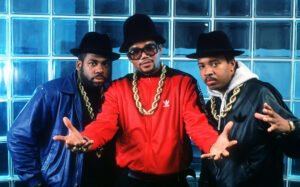Crammed together on a crowded stage during the first Republican debate of 2023, two figures stood out: 38-year-old Vivek Ganapathy Ramaswamy, a biotech millionaire with a Harvard pedigree, and 51-year-old Nimrata Haley (née Randhawa), an accountant, former governor of South Carolina and ambassador to the United Nations.
Like 58-year-old Kamala Devi Harris, America’s Vice President, Ramaswamy and Haley are in the 1% of the US population that is Indian American. Despite their shared heritage, all three grew up in different Americas — though in each, Indians were rare, exotic and little understood. Harris, born at the end of 1964, was among the first members of Generation X, while Haley is solidly in the middle of that cohort. Ramaswamy, as a geriatric millennial, is firmly a child of the Eighties and Nineties.
For Harris’s generation, the dominant image of India in the American imagination centred around gurus such as Maharishi Mahesh Yogi, whose association with The Beatles brought them to public prominence. In its most benign manifestation, India meant mysticism and spirituality, though sometimes this would transmute into cult-like communities around charismatic and exploitative figures who drugged their followers and inspired anxious newspaper headlines.
Seven years later, during Haley’s childhood, India had become a byword for overpopulation and global environmental catastrophe. The Western view was summed up in Paul Ehrlich’s The Population Bomb (1969), in which he described a night in Delhi that “seemed alive with people. People eating, people washing, people sleeping. People visiting, arguing, and screaming. People thrusting their hands through the taxi window, begging… People, people, people, people”. By the late Eighties and Nineties, however, when Ramaswamy was growing up, this view of India and Indians had become less hostile: the most prominent Indian American was Apu Nahasapeemapetilon from The Simpsons.
Largely as a result of their different childhoods, these three politicians responded to being outsiders, aliens despite being born in America, in disparate ways. Harris, the product of Sixties liberal idealism, has never denied her Tamil Brahmin mother’s identity; she was, after all, raised by an Indian woman after her parents’ divorce. But Harris’s attendance at the historically black Howard University and her Baptist religion points to the fact that she has chosen to align more closely with her African-American roots. Though she is both a black American and an Asian American, it is widely accepted that Joe Biden selected her because of her identity as the former.
Meanwhile, Haley, who grew up in the recently desegregated South, has talked about her lack of a place in a biracial world; as a young girl, she was disqualified from a beauty pageant because she was neither black nor white. Raised a Sikh by Punjabi Indian parents, Haley has never publicly distanced herself from her Indian heritage, but her conversion to Methodist Christianity, her decision to assume her husband’s Anglicised surname, and her somewhat racially ambiguous appearance have all furthered the perception that she is a model of smooth assimilation.
Ramaswamy, by contrast, cuts a different profile. The self-styled “skinny guy with a funny last name” is entirely candid that his Hindu religion is unfamiliar to most Americans. Married to another Indian-American professional, Ramaswamy is an exemplar of an emerging group that is often termed the “new Jews” in the media. They are American, but distinctive, notable and stand out.
Look around today and Indian Americans hold prominent roles in all walks of public life. In tech, the CEOs of Microsoft and Alphabet, the parent company of Google, are both Indian American. In politics, they are particularly dominant in the ruling party. Pramila Jayapal and Ro Khanna are prominent progressive voices in the Democratic Party, and among five Indian Americans in the House of Representatives, while former engineer Saikat Chakrabarti served as chief of staff for Alexandra Ocasio Cortez. Towards the party’s centre, Neera Tanden, director of Joe Biden’s Domestic Policy Council, has been a consigliere of Democratic leaders since advising Bill Clinton in 1992. And in more technical domains, the Surgeon General of the United States is Vivek Murthy, while the director of the White House Office of Science and Technology Policy is Arati Prabhakar.
This boomlet in prominent Indian Americans is a function of two complementary dynamics. First, and perhaps most obviously, America is truly a land of opportunity, a nation where immigrants can ascend to positions of power and accrue great wealth through dint of hard work and application of human capital. Yes, racism may exist, but it is no bar to advancement.
Secondly, and perhaps less obviously, it seems that South Asians, at least in politics, have talents and cultural dispositions that make that flourishing easier. Like other highly skilled Asian immigrants, Indian Americans are wealthier and more likely to be married and well-educated than the average native-born citizen — and yet, there does not seem to be a similar rise to cultural prominence in politics among East Asians as South Asians. A common explanation for this is that, as English-speaking and highly verbal elites from a society where disputation and competition are taken for granted, South Asian personalities and cultural orientations are better suited to the rough and tumble world of America’s ruling class, where self-promotion is no sin and assertion is taken as a given.
Vivek Ramaswamy is perhaps the end result of this dynamic. With an undergraduate degree in molecular biology from Harvard and a law degree from Yale, he perfectly captures the balance between technical and verbal fluency that is the marker of many South Asian elites. His brash, assertive and pugilistic debating style would not be out of place at an Indian American social gathering. And, crucially, he has accrued a vast fortune, a symbol of an opportunism that is entirely all-American, where getting rich is seen as glorious and a sign that one has “made it”. As a result, unlike earlier generations of Indian Americans, who aimed to blend in, the millennial Ramaswamy brings his distinctive South Asian personality to the fore, synthesising it with American assertiveness and claiming Donald Trump’s Maga mantle without embarrassment.
But should we be surprised? This is, after all, how it has always been. From Irish politicians to Jewish intellectuals, immigrants have transformed this country and reshaped it in their own image, all the while maintaining the cultural DNA that goes back to the intrepid British settlers who set out for a frontier for both the sake of God and gold. Ramaswamy and the current crop of Indian American public figures are simply what is old made new.
Disclaimer
Some of the posts we share are controversial and we do not necessarily agree with them in the whole extend. Sometimes we agree with the content or part of it but we do not agree with the narration or language. Nevertheless we find them somehow interesting, valuable and/or informative or we share them, because we strongly believe in freedom of speech, free press and journalism. We strongly encourage you to have a critical approach to all the content, do your own research and analysis to build your own opinion.
We would be glad to have your feedback.
Source: UnHerd Read the original article here: https://unherd.com/



